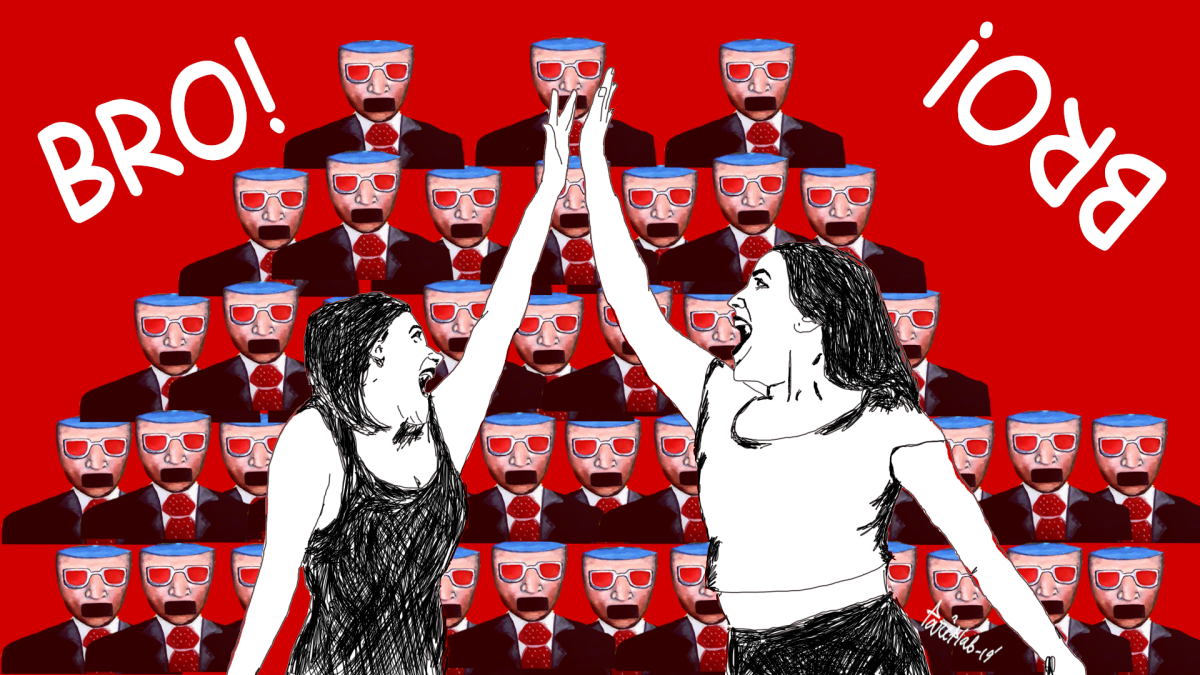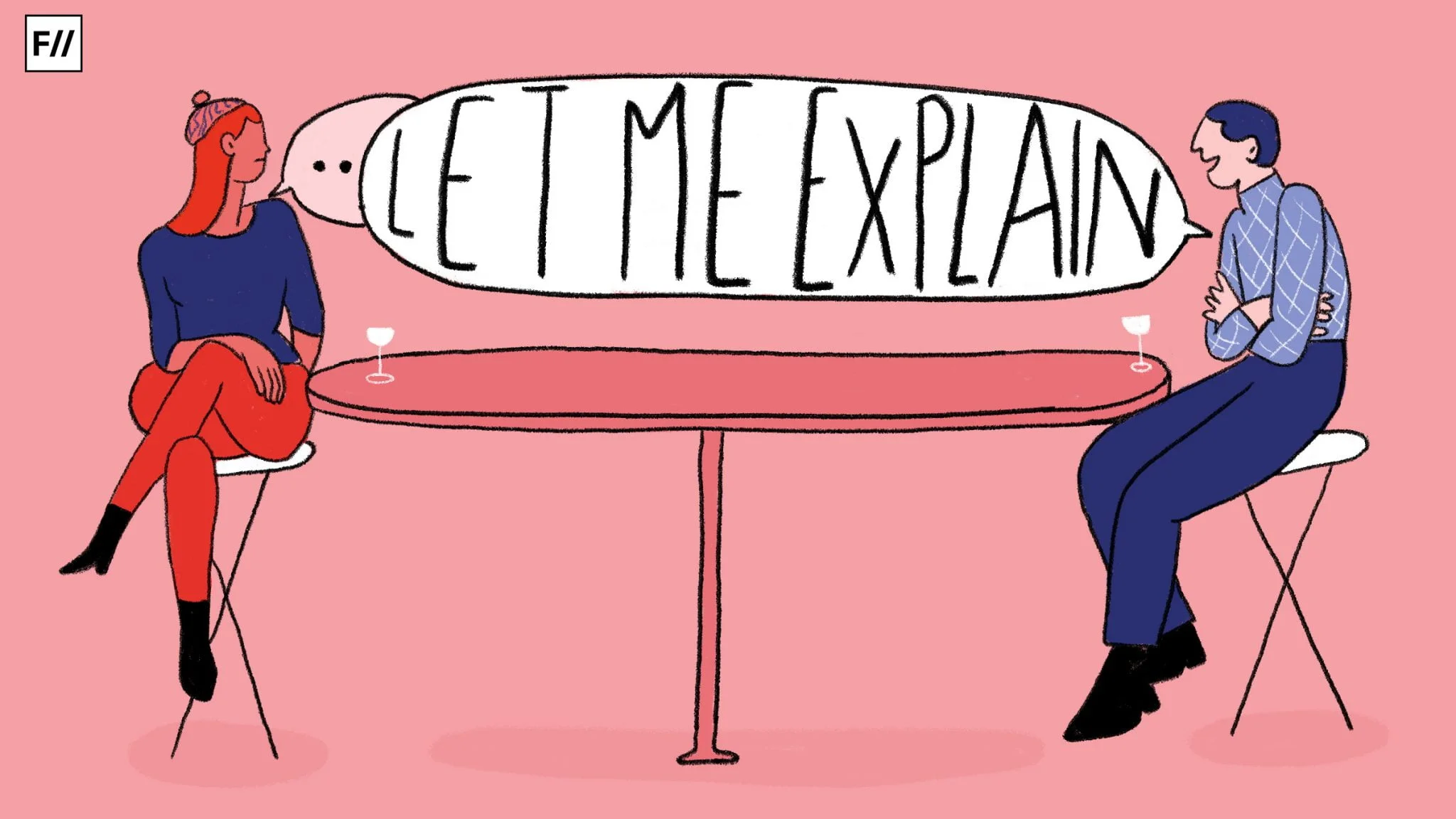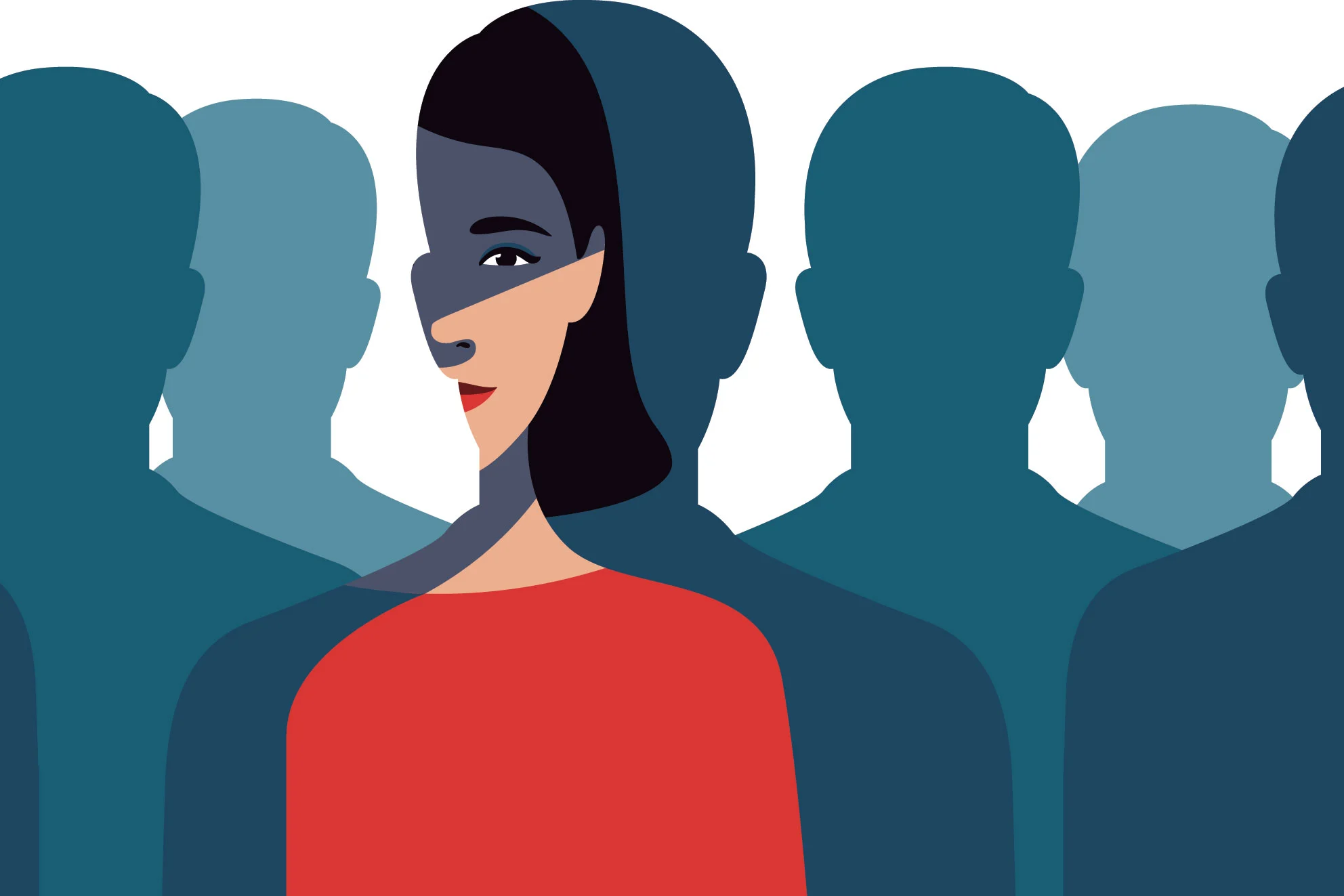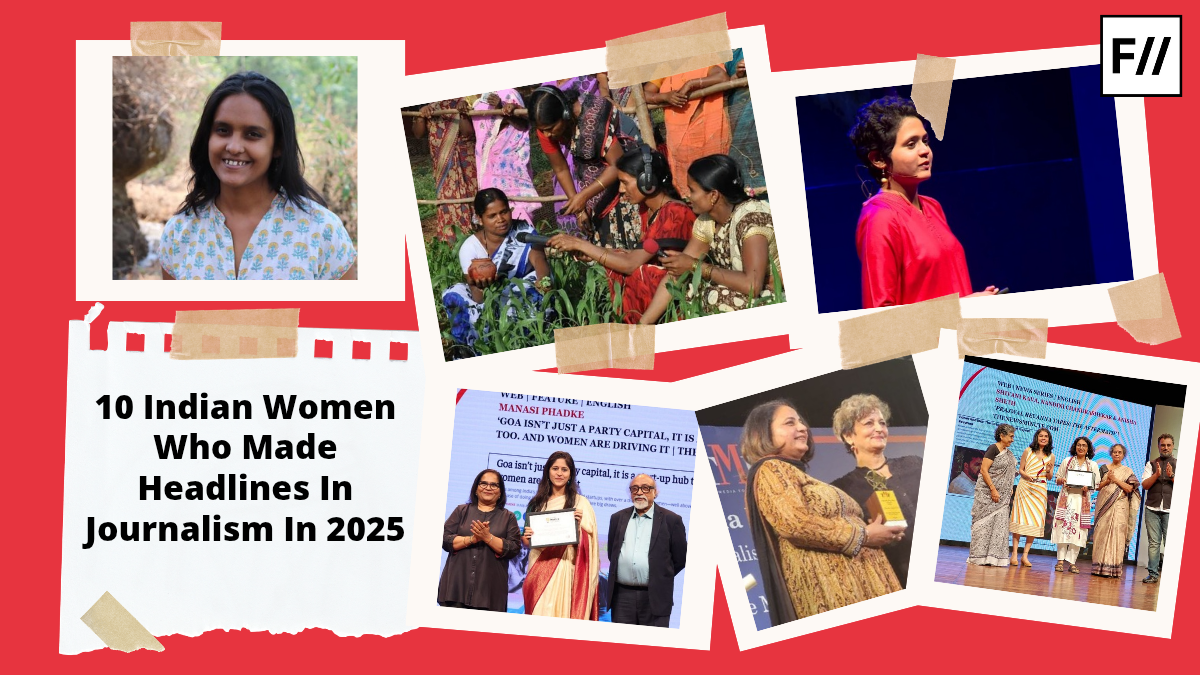In a world where history has consistently silenced the voices of women under patriarchal dominance, it is no surprise that literally their sounds and expressions – be it women’s laughter, loudness, or disagreement – have also faced stigma and suppression. Be it the masculinised representation in a workforce, household or social existence, the decibel of decency varies for both men and women. The voice of a woman in history, leadership, the workspace or politics has faced constant repression and lack of acknowledgement. It is not merely their pitch of laughter in its literal form that faces patriarchal control but also the loudness of their makeup and clothes, their decision-making capabilities, their professional achievements and even their salary demands.
The hidden norms of patriarchy determine the acceptable and the unacceptable. This acceptable and unacceptable sound of a woman has constantly fiddled with the idea of creating an equitable and just society for a woman and it will continue to do so if we fail to recognise the spheres which fail to catch our attention on its surface.
Men talk: masculinisation of a conversation
Jennifer Coates highlights the intersection of language and masculinity in her book, Men Talk: Stories in the Making of Masculinities’. In this book, she explores an in-depth understanding of how gender plays a significant role in determining the way a man and woman indulge in conversations. From bringing out a detailed survey of conversations between garage mechanics on a break, carpenters at the pub after work, and university academics chatting after hours, the book points out how men can hijack any conversation by being loud-mouthed and aggressive by their choice of words.

In India, the Chai Tapris and Nukkads are flooded with men from all walks of life, either discussing a beat from the newspaper, politics, their profession or their social lives, while women, despite consisting of 50% of the overall population, seem largely missing from all these spaces. They are simply confined behind the doors in the pretext of safety and security by the very men who take a break over chai to discuss IPL, F1, the stock market and women. They have simply built a preconceived notion that a woman wouldn’t be interested in Sachin, Senna or Sensex.
The mythological anecdote: laughter is criminal.
The battle to laugh freely without being judged goes back to our mythological past too. The Pandavas built a beautiful palace whose floor had a resemblance to water and they also adorned it with some water surfaces to bring out that visual harmony. They then invited everyone to the palace, including Duryodhan. Since the palace looked like water, Duryodhan got confused in identifying the water surface and the floor surface. The result was him falling into the pool, leading to an embarrassing moment where he got drenched and his dhoti came off in front of everyone. This sight made it unbearable for Draupadi to suppress her laughter, which made Duryodhan feel insulted and angry.
Gendered soundscapes: feminine and masculine
Sound has mostly been identified by the existing patriarchal norms. An avid range of gendered sounds running like a musical rhapsody, including the clicking of bangles, the sound of a spatula flipping parathas for breakfast, the whirring of machines operating in a factory, and the kneading of dough in a bakery, passively surround us.
These gendered soundscapes often lead us to associate a particular sound with a particular gender. The sound of firm and heavy footsteps becomes masculine, while the quieter and softer approaching footsteps get identified as feminine. Even the inanimate objects around us get segregated on the basis of gender, like scooters becoming scootys, to fit in the gender binary and become marketable for women.
These gendered soundscapes often lead us to associate a particular sound with a particular gender. The sound of firm and heavy footsteps becomes masculine, while the quieter and softer approaching footsteps get identified as feminine. Even the inanimate objects around us get segregated on the basis of gender, like scooters becoming scootys, to fit in the gender binary and become marketable for women.
The scooty also got colour-coded to suit the feminine demand and unlike the throbbing sound of the bullets, it has a very quiet operation on the road, further being considered as an ideal pick for the women. Similarly, the windchimes, the chandelier, the fairy lights, the balloons and the ribbons also became quietly feminine, while the machines, the sword, the football, the tyres and the trucks became masculine.
Values, traditions and architecture: The patriarchal way of life
Is noise considered something criminal? Women who raise their voice in the house to laugh or sing are nonchalantly branded as ungraceful women. Their laughter and singing is conveniently categorised as the sound of loose women. Or they are merely considered as a bunch of idiots chattering about their homely trifles, again being stereotyped in the context of gender. A woman who talks back, questions and dissents is considered a threat to the traditional thread of a society, thus leading to a subdued political representation and pay gaps in the workforce.

The deep-rooted patriarchy has not only been preserved by mouthing control but also through the design and architecture of the city. “Door Knockers” is an example of the lesser-known gendered design in Persian architecture. Also being one of the most popular symbols of Iranian culture, these door knockers can be spotted in numerous old houses of the country. Adorned meticulously with a specific pattern, engravings and heavy brass further finished with nails and anchors, these knockers are different for men and women.
Women who raise their voice in the house to laugh or sing are nonchalantly branded as ungraceful women. Their laughter and singing is conveniently categorised as the sound of loose women.
The masculine knocker has a higher pitch, while the feminine knocker has a lower pitch; the sound is precise enough for the owner of the house to identify the male or female guest knocking on the door. Apart from this, the basic design and establishment of a city also screams of masculinity, with towering sculptures and statues of male leaders standing upright in the prime locations of the city, while statues of female leaders are rare or non-existent.
Semantics of names: the softer, the better
Patriarchal representations of sounds are not only limited to the stereotypes we create based on the psychological or surface soundscapes. But even the semantics of names broadens this gender segregation further. Since then, women have been reduced by the pioneers of the patriarchal mindset to mere homemakers, where their specific qualities are limited to being compassionate, soft and beautiful. This mindset glares immensely in the semantics of names like Viraat, meaning brave, and Rudra, meaning roarer, which fit perfectly as the best choice of names for men, while names like Aleena, Aakriti, and Gul, meaning silk-like, soft, beautiful, and delicate, are chosen for women. These names and their meanings clearly imply the ideal image of a woman in the heads of a patriarch or a patriarchal society.
Expressions, emotions and empathy: the E’s of a woman aren’t easy.
Rage as an emotion is not considered ideal for a woman. Women who aggressively put out their opinions with force and precision are looked down upon, while at the same time, a loud leader is celebrated for his courage and is considered as brave, vigorous and articulate. The anger of men becomes righteous and powerful, while the anger of women becomes questionable. Quite often, a patriarchal society has weaponised the anger of women and labelled it as irrational, illogical and hysterical.
It is a very recurring sight in a sexist society where a woman is schooled to stay silent and take a backseat when the man of the house gets angry. Her existence is limited to her setting the table for dinner, the sound of cutlery which she lays with perfection, the sound of her anklets when she is adorning herself and the sound of a sumptuous meal which she is preparing for the men of the house, which are considered as the socially acceptable ways to be heard and to exist.
Poetry, music and comedy: noise is a song.
Through a deep-rooted socio-political conditioning and stigmatising a woman’s expression of rage, patriarchy enables men to become violent, abusive and dominating. The patriarchal conditioning also stigmatised the tears as feminine and the scream as masculine. Bollywood also encashed on a sobbing beautiful woman and a screaming chiselled man in most of its movies, romanticising misogynistic songs like ‘Pyar Itna Zyada Diya Ki Woh Rone Lagi Mansik Santulan Apna Khone Lagi’.

The noise becomes a song when a “masculine” rapper objectifies a woman and it will get louder and noisier if a woman seeks autonomy and takes back control. The noise becomes comedy when a stand-up comedian makes misogynistic comments but laughter gets jittery when the women chat in public spaces. It is the patriarchal judgement which defines and redefines noise merely from the lens of who is making it to decide if their sound can be considered a symphony or a cacophony.
Over a period of time, the women were made to believe that if a woman is angry, it is because of her own misbehaviour, flaws and failures. Therefore, a woman must question herselfif she is feeling any sense of rage before deciding to let it out. The anger of a woman is not considered societal; it’s just seen as her personal lack, for which a woman herself must take the responsibility. In a society composed of angry men and socially mute women, the poetry by Wendy Cope, “He tells her”, takes a dig at the repressive psychology of men which hampers the idea of an inclusive and equal society.




